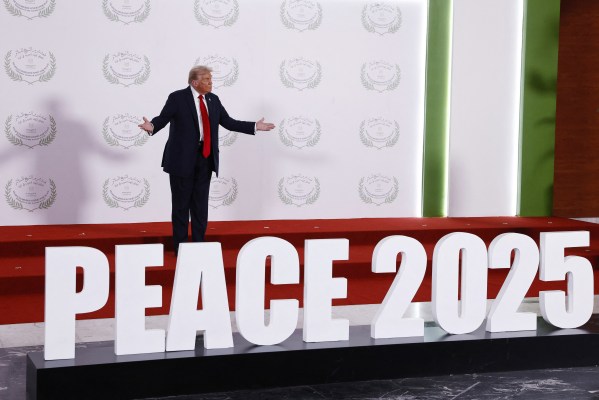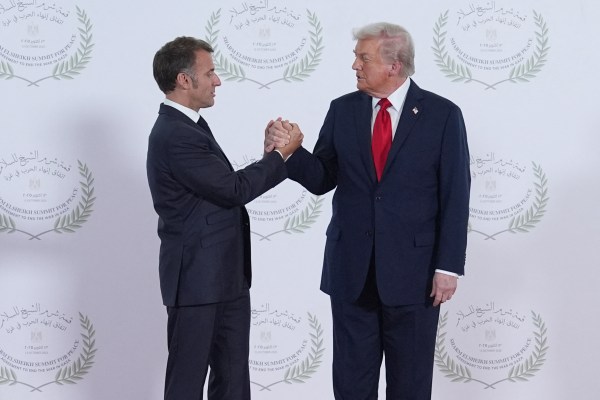Turn any article into a podcast. Upgrade now to start listening.
Premium Members can share articles with friends & family to bypass the paywall.
To understand the idiotic trade war with China launched by Donald Trump in his second administration, study the idiotic trade war with China launched by Donald Trump in his first administration.
When Trump took office in 2017, the negative balance of trade with China—the so-called trade deficit—was about $375 billion. Under Trump’s anti-trade policies, it was soon ... $418 billion in 2018. Back down to $343 billion in 2019, $308 billion in 2020, and back up to $353 billion in 2021, the year Trump reluctantly left office after attempting to stage a coup d’état to remain in power. Biden’s administration coincided with two years of sub-$300 billion trade deficits—not because the U.S. economy was so strong but because it was weak: When Americans are struggling, they consume less than they would have otherwise, which typically means lower imports.
Trump’s first-term trade war with China produced very little in the way of favorable trade results for U.S. firms. There was no radical and long-lasting change in the balance of trade and very little reform of Chinese trade practices. Trade deficits are essentially meaningless as an economic metric and do not actually tell us very much about trade policy (trade deficits are the flip side of capital surpluses; nations with relatively high savings rates tend to invest more of their earnings from exports and spend less on imported consumer goods) but, on that score, there was no progress: The U.S. trade deficit in 2016 was $502 billion, and in 2021 it was $861 billion, a record high, having hit $677 billion in 2020, Trump’s last full year in office.
But Trump’s first trade war with China did have practical effects, the main one being that it spurred Beijing—and U.S. economic competitors worldwide—to get ready for the next trade war. In the first Trump administration, Beijing targeted U.S. soybean exports, as it is doing today, not because Beijing wants to protect domestic soybean production (which is not a very big economic concern) but in order to put political pressure on Trump and Republicans by gutting the incomes of Midwestern farmers. But that imposed costs on consumers in China, too, where soybeans are used mainly in animal feed—the Chinese, like many other peoples around the world, have added more meat to their national diet as they have grown richer. Higher food costs are an acute political threat in China, and, with that in mind, Beijing deepened its relationships with soy producers in the Southern Hemisphere, notably in Brazil and Argentina. Beijing also oversaw the construction of new grain storage facilities, adding some 772 million tons to its reserve capacity.
The results? Beijing now controls more than one-third of all global soybean stocks, with about 48.5 million metric tons of soybeans on hand. Brazil is producing record soybean crops and has increased acreage under cultivation for soybeans by 42 percent since Trump’s first trade war. And, because Argentine President Javier Milei knows how to flatter a buffoon like Donald Trump, U.S. soybean farmers are being taxed to bail out the government of Argentina, where soy cultivation currently is growing by about 7 percent a year. And China will have soybean imports at or near all-time records—while U.S. producers are selling not a single lonely bean in China, thanks to a blanket prohibition handed down by the ruling junta.
Another way of putting that: Donald Trump’s first trade war with China managed to provoke a fundamental change in the physical capital supporting the soybean trade between South American producers and China, with more Southern Hemisphere soybean being grown and new facilities in China to store it, thus alleviating the need to switch between northern and southern producers to accommodate different growing seasons. There are real costs involved in building grain storage and developing or repurposing croplands, but Trump’s idiotic trade policies from 2017 to 2021 made those changes economically viable and politically expedient. Trump sent some bailout checks to farmers last time around, and he will no doubt fight to do the same this time around. But American farmers do not want to languish as wards of the welfare state—they want to farm.
Similar stories are unfolding across industries and firms across the country. The Trump administration’s policies are dumb and destructive, and they have shown themselves to be failures even on Trump’s own supposed terms.
Trump’s low-energy Juche was a failure in the first administration. It is a failure in the second administration.
There are real national security problems wrapped up in the U.S.-China economic relationship, and these should be dealt with—as national security problems, not by the willy-nilly implementation of a national sales tax on Americans who buy flip-flops or cheap cameras made in China. And there are real trade-specific issues, too, prominent among them the Chinese theft and abuse of U.S. intellectual property—another problem that is not a result of Chinese tariffs and that is not going to be solved by means of American tariffs.
Dealing with these issues in a substantive way would require two things the Trump administration consistently resists: hard work and clear thinking.







Please note that we at The Dispatch hold ourselves, our work, and our commenters to a higher standard than other places on the internet. We welcome comments that foster genuine debate or discussion—including comments critical of us or our work—but responses that include ad hominem attacks on fellow Dispatch members or are intended to stoke fear and anger may be moderated.
With your membership, you only have the ability to comment on The Morning Dispatch articles. Consider upgrading to join the conversation everywhere.